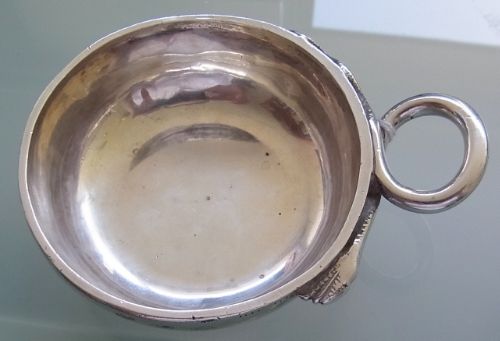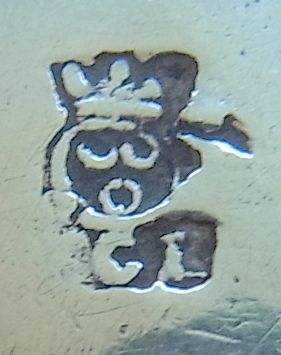I am curious where you got these "rules" for Mâcon and Chalon-sur Saône maker’s marks. I rarely read all the books I have, but I don't remember ever hearing of them either. As a citizen of France I can assure you the various governments we have had make up all sorts of laws and taxes, and the French then figure out how to get around them. There were in fact rules about marking of silver which changed constantly and were often ignored. In fact there are hundreds of French silversmiths who lived in smaller, less regulated, towns who just marked silver with their maker's marks, usually struck 3 times. Then of course there are hundreds more who lived in the colonies. I have over the years found numerous examples of "inconsistencies".
Flipping through " Les Orfèvres de Bourgogne" I found numerous examples of the three rings mark and various cartouches, including circular ones. I was going to count them, then debate the CS comment and the date letter comment, but then I realized my mistake. When I looked for a name ending in L to find the mark, I realized the last name could be C-L or G-L.
Eureka!.
So here is the explanation. François GUILBERT-LATOUR. 1721-1793
He was apprenticed in Paris in 1736-1745. He was accepted as a master silversmith in Chalon-sur Saône, but would have to wait for the next available spot. Then went for two years to Louhans, a very small agrarian town, where he was the first silversmith, and it was too small to support him. Then he went to Auxerre his birth place. Now Auxerre is part of Burgundy, but was not part of the area of Dijon. It is part of the jurisdiction of Paris. Helft shows a drawing of an “A” mark similar to Paris and the one on the taster. But he kept his mark from Chalon, where it was struck. So we have a Dijon mark, on a Paris piece. But we are not quite out of the woods. He only made a masterpiece in Auxerre in 1847 too late to be struck with the A mark. To me it is just an inconsistency, not a block. Perhaps he bought a partially made piece, who knows. The important thing is that it is his maker’s mark and the monkey mark would have been used in Auxerre legitimately. As I said in another posting I have never seen that mark faked (it may have been, but I have never seen it).
I am posting the very poor photo from the Burgundy book. It is easy to see differences, which can be caused by aging of the stamp, etc. But please concentrate on the spacing, and size of the rings and the spacing of the G and L, etc.
My final comment is that while I have not had the taster in hand, it looks like it has good patina, something that cannot be faked. Faker’s usually follow the rule to make things easy to recognize, no one is going to go through all this effort to sell a relatively inexpensive piece. I would buy this piece in a New York second.
Maurice







